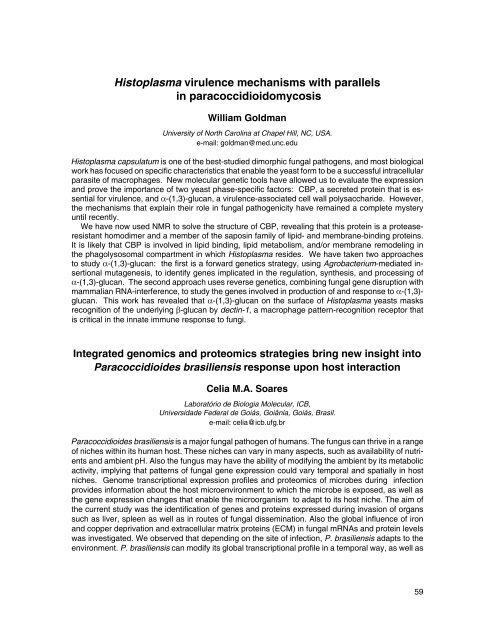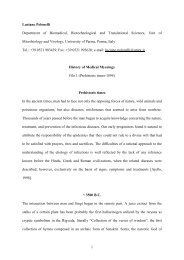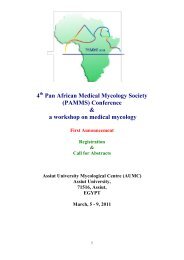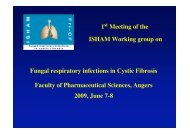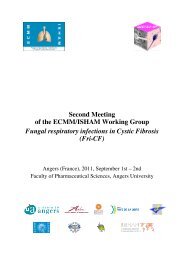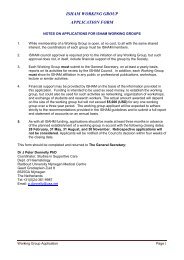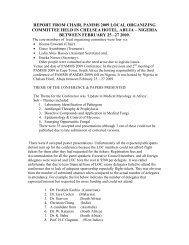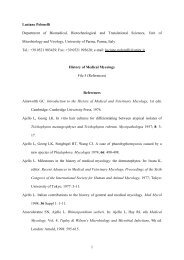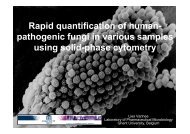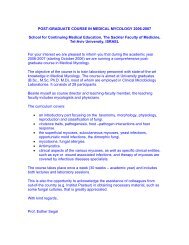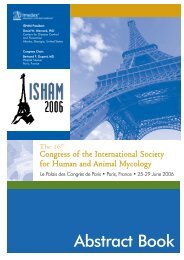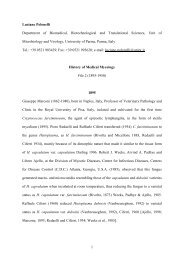Memoria CD.indd - ISHAM
Memoria CD.indd - ISHAM
Memoria CD.indd - ISHAM
You also want an ePaper? Increase the reach of your titles
YUMPU automatically turns print PDFs into web optimized ePapers that Google loves.
Histoplasma virulence mechanisms with parallelsin paracoccidioidomycosisWilliam GoldmanUniversity of North Carolina at Chapel Hill, NC, USA.e-mail: goldman@med.unc.eduHistoplasma capsulatum is one of the best-studied dimorphic fungal pathogens, and most biologicalwork has focused on specific characteristics that enable the yeast form to be a successful intracellularparasite of macrophages. New molecular genetic tools have allowed us to evaluate the expressionand prove the importance of two yeast phase-specific factors: CBP, a secreted protein that is essentialfor virulence, and α-(1,3)-glucan, a virulence-associated cell wall polysaccharide. However,the mechanisms that explain their role in fungal pathogenicity have remained a complete mysteryuntil recently.We have now used NMR to solve the structure of CBP, revealing that this protein is a proteaseresistanthomodimer and a member of the saposin family of lipid- and membrane-binding proteins.It is likely that CBP is involved in lipid binding, lipid metabolism, and/or membrane remodeling inthe phagolysosomal compartment in which Histoplasma resides. We have taken two approachesto study α-(1,3)-glucan: the first is a forward genetics strategy, using Agrobacterium-mediated insertionalmutagenesis, to identify genes implicated in the regulation, synthesis, and processing ofα-(1,3)-glucan. The second approach uses reverse genetics, combining fungal gene disruption withmammalian RNA-interference, to study the genes involved in production of and response to α-(1,3)-glucan. This work has revealed that α-(1,3)-glucan on the surface of Histoplasma yeasts masksrecognition of the underlying β-glucan by dectin-1, a macrophage pattern-recognition receptor thatis critical in the innate immune response to fungi.Integrated genomics and proteomics strategies bring new insight intoParacoccidioides brasiliensis response upon host interactionCelia M.A. SoaresLaboratório de Biologia Molecular, ICB,Universidade Federal de Goiás, Goiânia, Goiás, Brasil.e-mail: celia@icb.ufg.brParacoccidioides brasiliensis is a major fungal pathogen of humans. The fungus can thrive in a rangeof niches within its human host. These niches can vary in many aspects, such as availability of nutrientsand ambient pH. Also the fungus may have the ability of modifying the ambient by its metabolicactivity, implying that patterns of fungal gene expression could vary temporal and spatially in hostniches. Genome transcriptional expression profiles and proteomics of microbes during infectionprovides information about the host microenvironment to which the microbe is exposed, as well asthe gene expression changes that enable the microorganism to adapt to its host niche. The aim ofthe current study was the identification of genes and proteins expressed during invasion of organssuch as liver, spleen as well as in routes of fungal dissemination. Also the global influence of ironand copper deprivation and extracellular matrix proteins (ECM) in fungal mRNAs and protein levelswas investigated. We observed that depending on the site of infection, P. brasiliensis adapts to theenvironment. P. brasiliensis can modify its global transcriptional profile in a temporal way, as well as59


